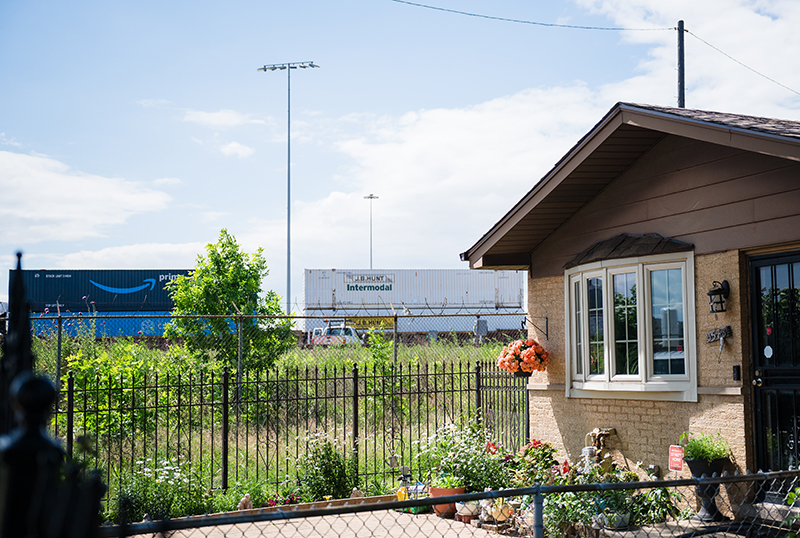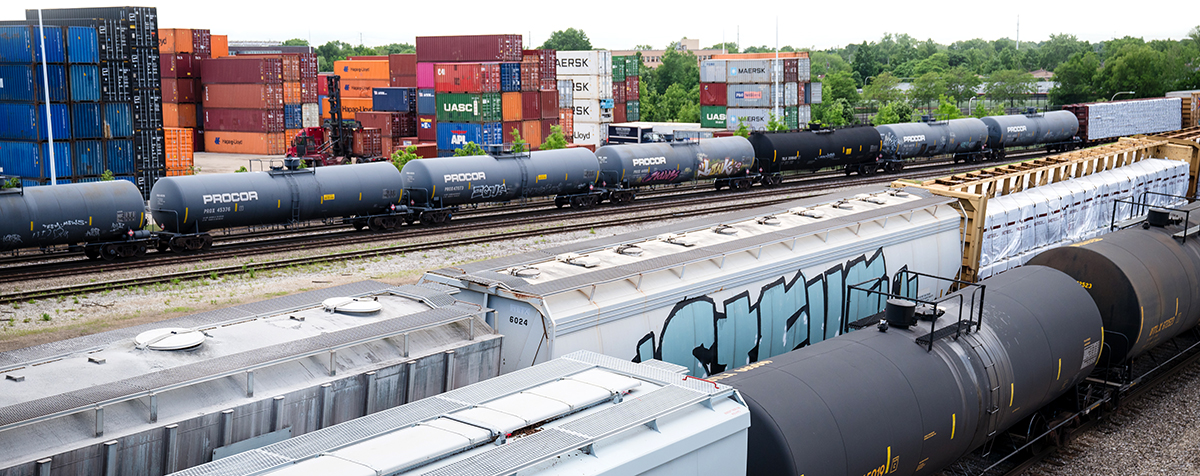Zero Emissions in Freight: Rail & Locomotive
The rail industry remains one of the most significant sources of environmental injustice impacting low income communities and communities of color. MFN members live near railyards and freight rail routes, where some of the dirtiest switcher and line-haul locomotives belch diesel pollution into neighborhoods everyday, often just feet from homes, schools, community centers, and workplaces. In order to address the impacts from locomotives and rail yards, Moving Forward Network (MFN) demands comprehensive regulations that center the needs of frontline and fenceline workers and communities.


MFN’s Demands on Rail & Locomotives
MFN demands that the U.S. Environmental Protection Agency (EPA) take immediate and bold action to address the public health, air quality, and climate crises caused by locomotive and railyard pollution—especially in communities living closest to these operations . Include in the rulemaking a Tier 5 zero-emission locomotive standard for all new freight locomotives that:
- Include in the rulemaking a Tier 5 zero-emission locomotive standard for all new freight locomotives that:
- Transitions all new switchers and line-haul locomotives to zero-emission technology as rapidly as possible.
- Prioritizes deployment in environmental justice communities already overburdened by freight pollution.
- Establish a national strategy to retire and remove high-polluting locomotives and engines that do not meet Tier 5 or equivalent zero-emission standards.
- Use regulatory, market, and funding tools to support this transition.
- Prevent further entrenchment of diesel infrastructure in overburdened communities.
- Set emission standards for all remanufactured locomotives and engines that:
- Require remanufactured switchers and line-haul locomotives to meet at least Tier 4 standards as an interim step toward full electrification and zero emissions.
- Leverage existing Clean Air Act authority, including section 108(f)(1)(C), to identify and implement strategies that clean up toxic hot spots associated with rail and railyard operations.
- Work with frontline and fenceline communities to create a national strategy to eliminate the pollution burdens of concentrated railyard operations.
- This includes, but is not limited to, emissions and harms from locomotive maintenance facilities, parking/idling, and warehouse operations that disproportionately impact environmental justice communities.
- Deploy air quality monitors near railyards across the United States to measure emissions impacts.
- Monitoring efforts must be developed in collaboration with environmental justice leaders, include regular public data access and reporting, and inform both enforcement and mitigation strategies.
- Conduct emissions modeling that accounts for proximity to sensitive receptors, cumulative impacts, and health burdens—especially those disproportionately borne by low-income communities and communities of color.
- Coordinate with the Department of Energy, Department of Transportation, and Federal Railroad Administration’s Climate & Sustainability Division to expand deployment, funding, and development of zero-emission rail solutions.
- These efforts must be co-developed and co-governed with environmental justice communities.
Sign Up for Updates on the Moving Forward: Demand Zero Emissions in Freight Now Campaign
The voices from environmental justice communities and frontline workers must not only be included – but centered – as we turn towards new solutions for a zero emission future. MFN and its members are deeply committed to advancing environmental justice, equity, economic justice, and a just transition.
Sign up for updates in the form below.
